Fork-Leaved Sundew (Drosera) Cultivation

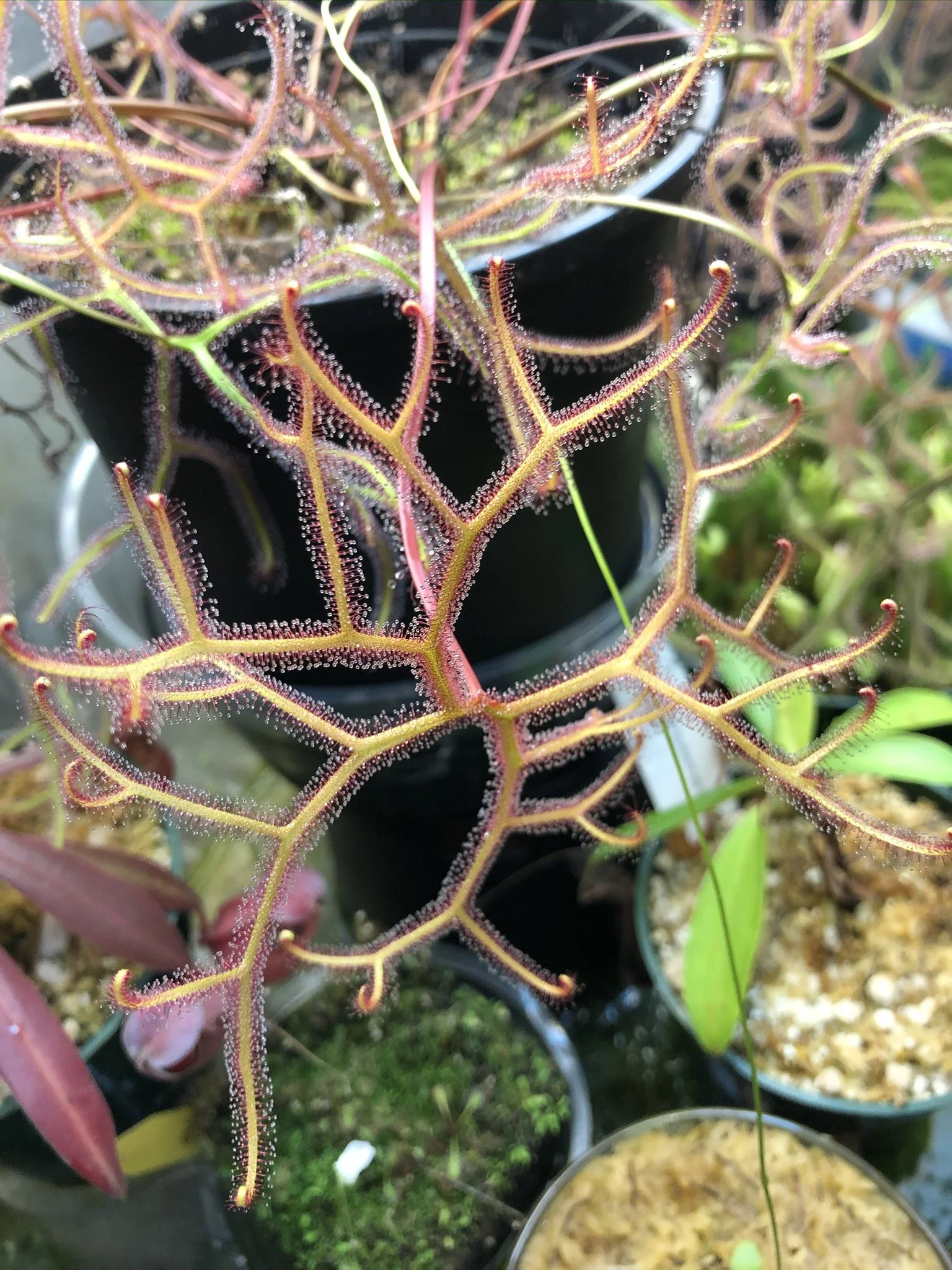
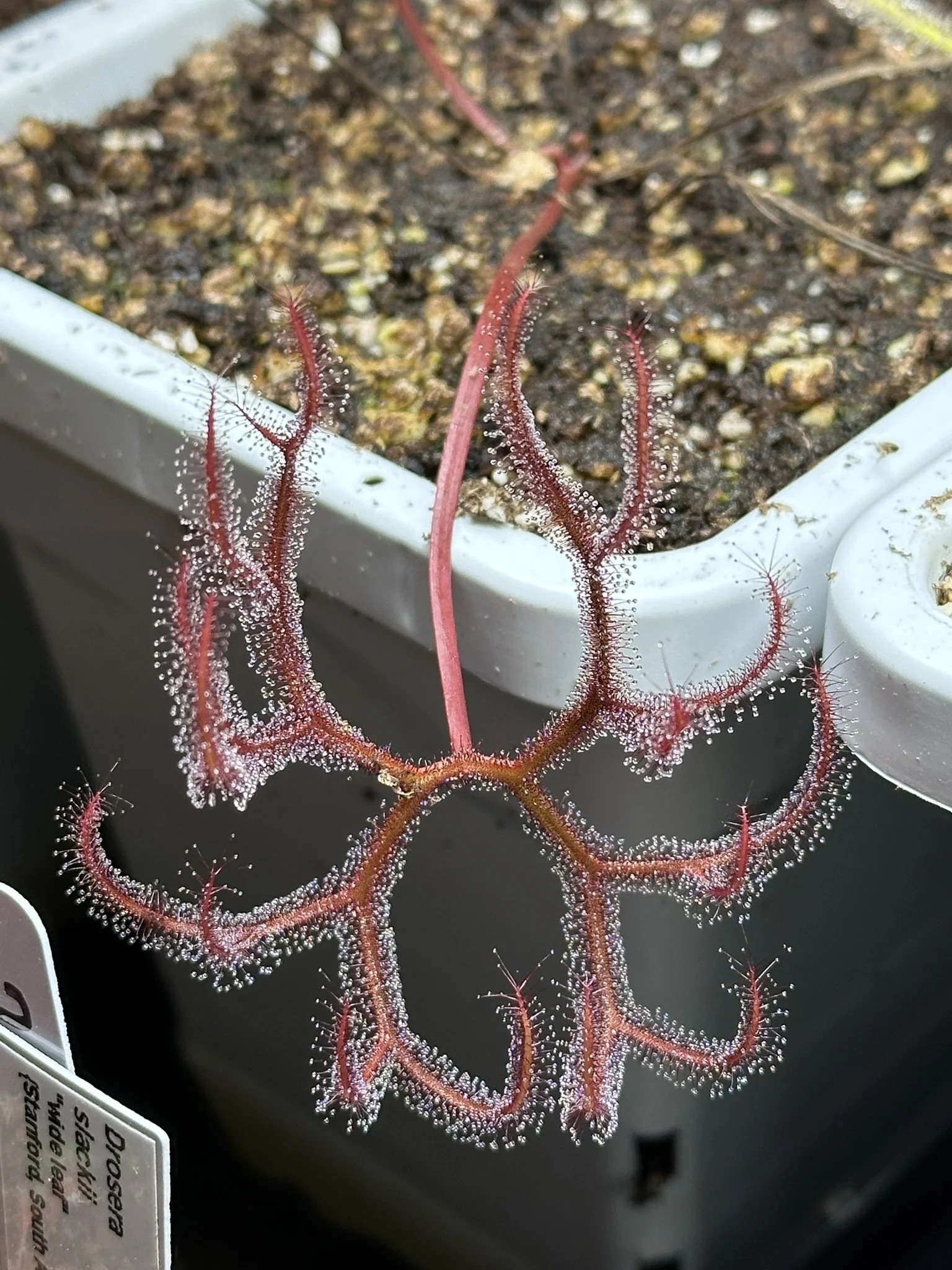
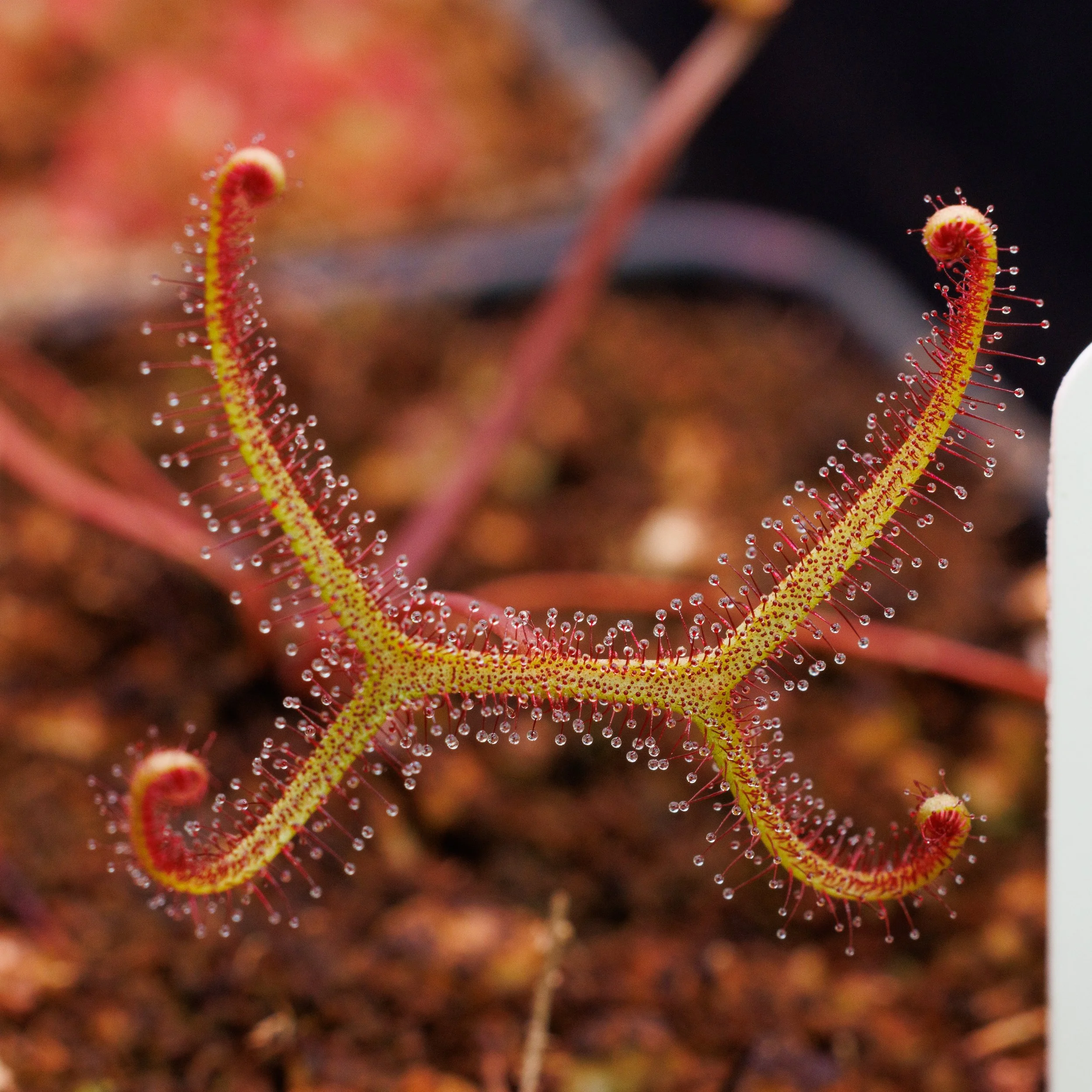
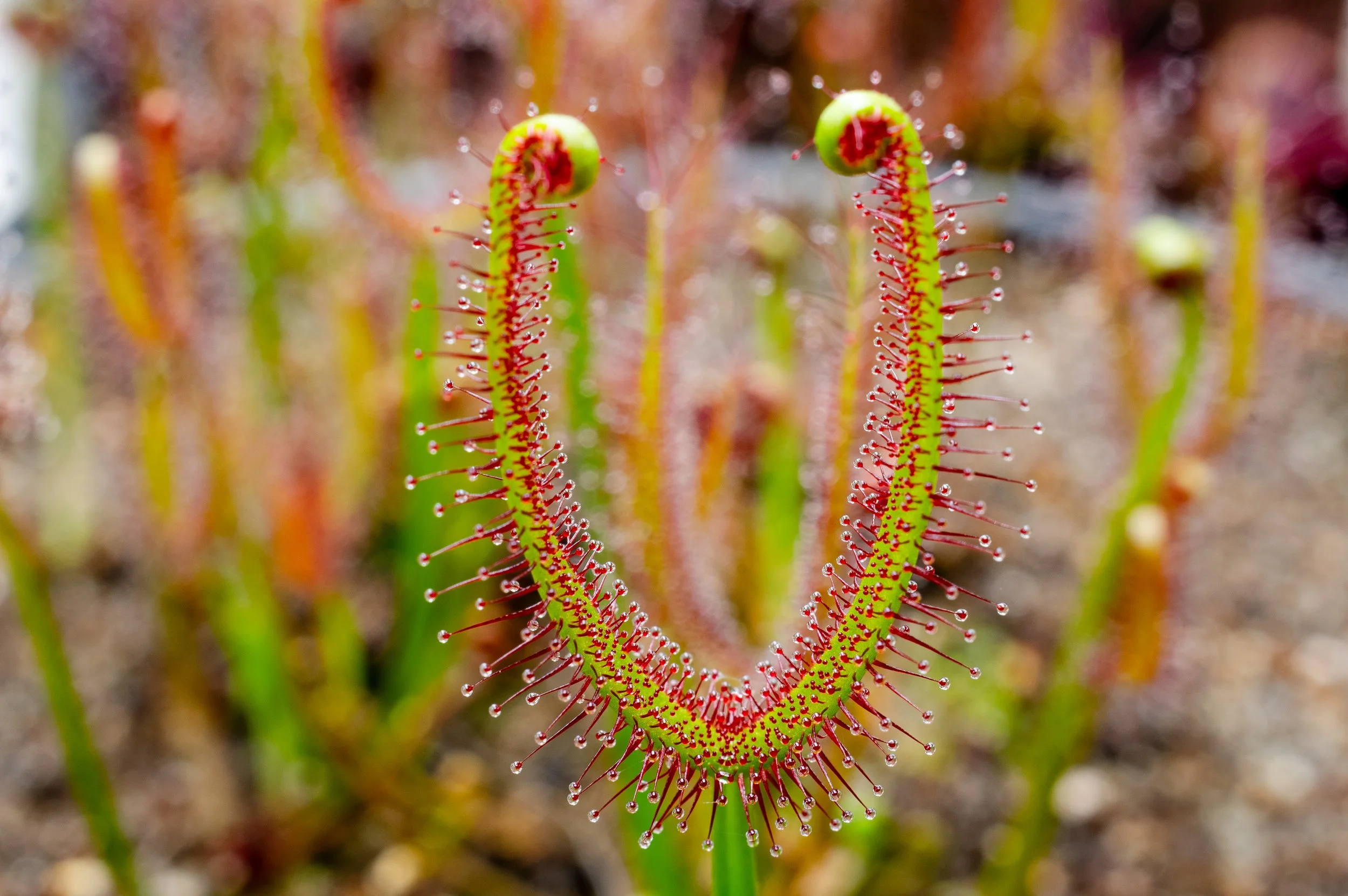

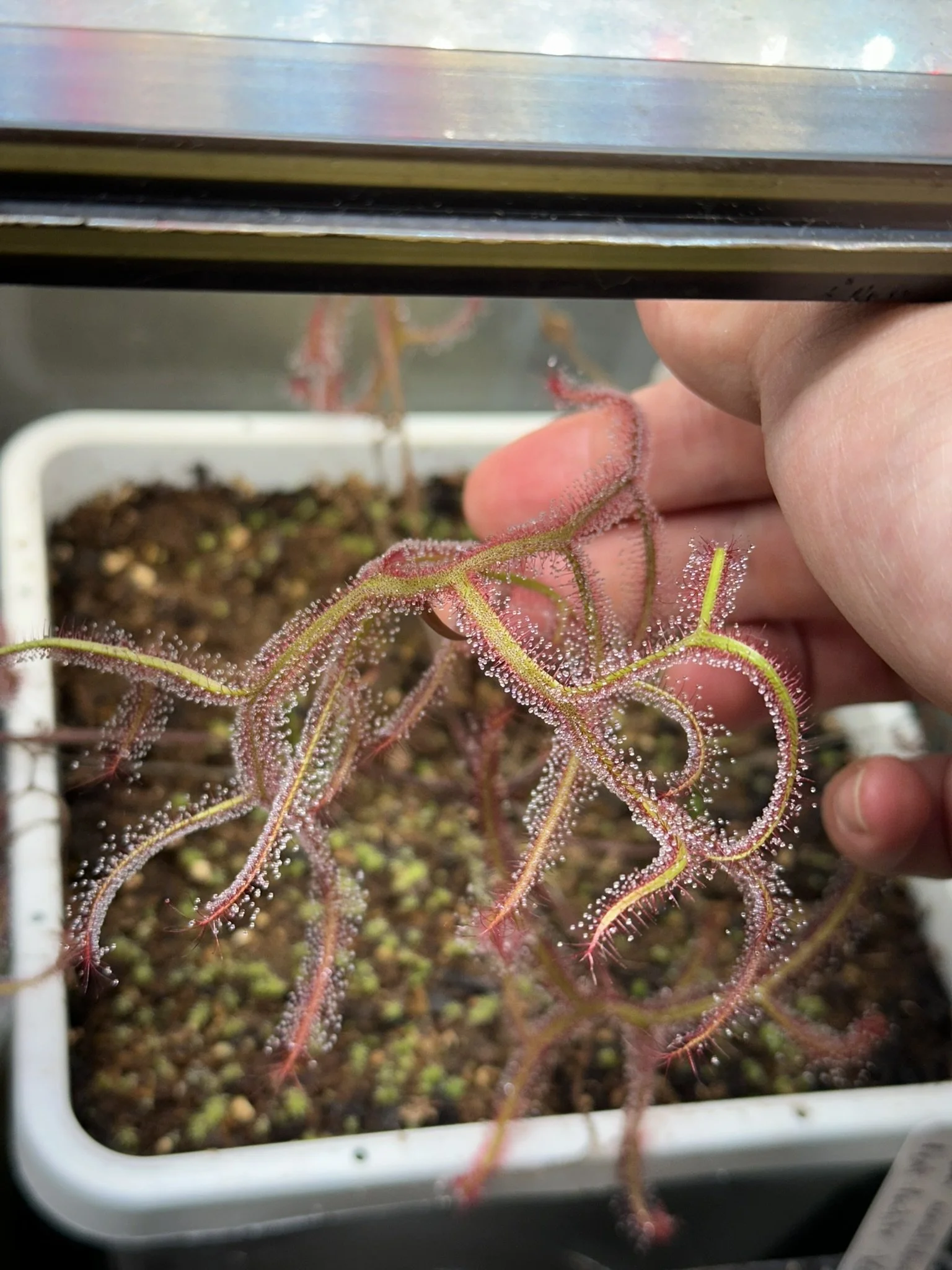
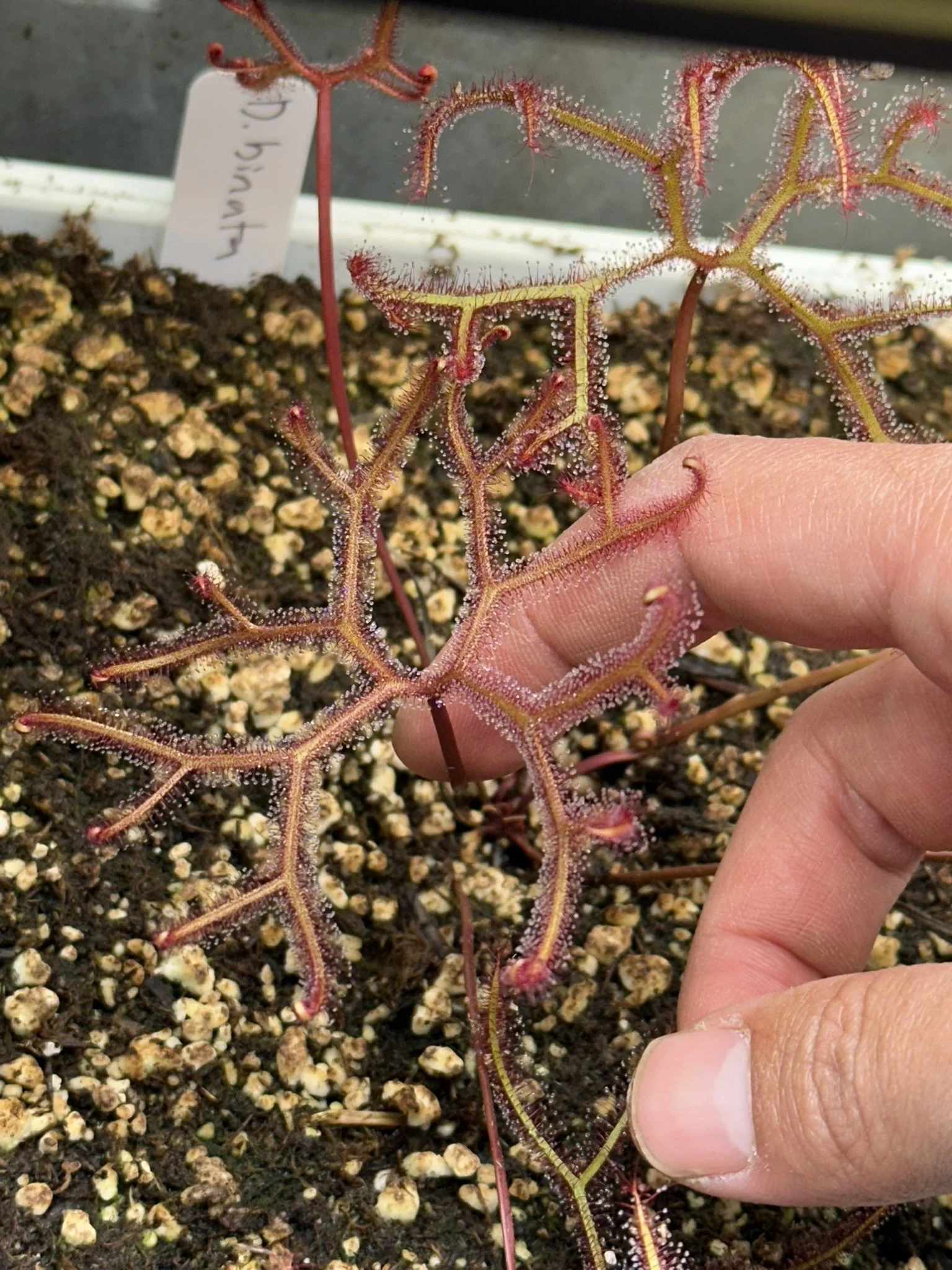

General Info:
The Fork-Leaved and Staghorn Sundews are completely unique and bizarre sundews with forked and multiply branching leaves. While all are technically one species, Drosera binata, there are many cultivated forms that vary in the color, size, and most importantly, number of forks in their leaves. The typical “T-form” has a non-carnivorous leaf base (petiole) that splits once into 2 tentacle-covered blades in a T-shape (more like a Y-shape actually). Some forms of the standard Drosera binata can eventually fork again into 4 points. Most of the T-form variants turn a red color in strong light and are also self-pollinating to produce large numbers of seed.
The form, Drosera binata var. dichotoma, typically forks twice into 4 total points, though large plants can have perhaps 6-8 points per leaf. The most famous “Giant” form can grow to enormous sizes (~24” long leaves in massive clumps) and maintains a greenish-yellow color, even in bright light. This is the largest form in total size. Both this form and the T-form have an obligate winter dormancy induced by photoperiod. They will go dormant for several months each year.
“Staghorn Sundews” refer to forms that have multiply forked leaves reminiscent of the shape of antlers. These incredible forms have long thin petioles that split multiple times into “staghorn” carnivorous leaves covered in bright red tentacles. Unlike the less branched forms of Drosera binata (“t-form”, var. dichotoma), forms like Drosera binata var. multifida f. extrema (a botanically invalid, but widely used name) and Drosera x ‘Marston Dragon’ (a hybrid between var. dichotoma and var. multifida f. extrema) are subtropical and do not have a strict dormancy period. They can grow to immense sizes with pendulous leaves over 1’ long in dense clumps that will slowly spread throughout their pot. Some forms of “extrema” can have over 70, or even 112 points on their leaves!
As a collective species, Drosera binata (and all the variants), are native to the South and East coast of Australia, and at low elevation sites in New Zealand. The “T-form” is widespread and often experiences freezing temperatures in winter (hence the obligate dormancy). The dichotoma “Giant” form originates from near Sydney and has a winter dormancy. The multi-branching forms are found in more subtropical climates in Eastern Australia (north of Sydney) in a restricted range, and do not have dormancy.
Regardless of the dormancy requirements (mostly induced by photoperiod), all the forms enjoy similar growing conditions. They love lots of bright light and most will turn a deep red color. I find that they do well in quite wet soil, and they tolerate high water levels in their trays. Soil mixes can be anything peat based with some drainage from sand/perlite (a 50% peat: 50% sand/perlite mix is what most use). Because they are large plants, feeding them adequately will ensure vigorous growth. They will spread through stolons/roots and create large clumps over time, and given the extensive root system, large pots are preferred. The roots can form massive, tangled networks in the pots with dozens of plantlets sprouting off the surface roots. I find they love being outdoors in full sun and tolerate a range of temperatures. Overall, quite easy and spectacular for any grower.
Cultivation:
Lighting: Part to Full Sun or 20W per sq ft LED light. Prefers very strong light to avoid weak, floppy leaves and to have bright red coloration. Lack of light will cause them to be weak and malformed.
Water: Distilled or Reverse Osmosis water. Sitting in 0.5”-2” of water using the tray method (depending on pot height). It can grow quite wet and waterlogged if given enough light.
Climate: Temperatures from 40-90F, all humidity levels. The “T-form” and dichotoma will go dormant in winter and can tolerate frost (or colder, depending on exact form). The multifida and ‘Marston Dragon’ forms prefer to avoid freezing and will grow continuously.
Soil: Soil can be 50% peat: 50% perlite/sand, though most peat or sphagnum based mixes will be good. Peat based mixes with decent drainage are best. Deep pots are good to accommodate the long, thick root systems.
Feeding: Feed leaves with Insect Powder every 2-4 weeks or more. Can also be fed with ~200-400ppm MaxSea or Dynagro Foliage Pro by spraying on the leaves. Foliar feeding can be easier with large plants and can help maintain an attractive look to the leaves.
Notes:
These grow beautifully under strong LEDs, but can become large and pendulous, requiring sufficient space.
The flowers of the “T-form” are often self-pollinating to produce seed. The other forms do not self-pollinate.
Dormancy can vary from 3-6 months depending on conditions and on the genetics of the form.
Seedlings will have typical Drosera leaves, eventually producing singly forked leaves (Y-shape). The multi-branching forms will accumulate more branches as they grow larger, starting with 2 points.
Most of these species can grow new plantlets from leaf cuttings and roots.